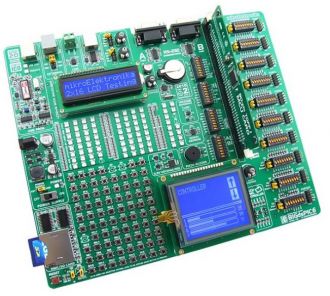
We strongly encourage users to use Package manager for sharing their code on Libstock website, because it boosts your efficiency and leaves the end user with no room for error. [more info]

Rating:
Author: MIKROE
Last Updated: 2016-02-20
Package Version: 1.0.0.0
Example: 1.0.0.0
Category: Development Systems
Downloaded: 1181 times
Followed by: 1 user
License: MIT license
Examples for BIGdsPIC6 development system
Do you want to subscribe in order to receive notifications regarding "BIGdsPIC6" changes.
Do you want to unsubscribe in order to stop receiving notifications regarding "BIGdsPIC6" changes.
Do you want to report abuse regarding "BIGdsPIC6".
| DOWNLOAD LINK | RELATED COMPILER | CONTAINS |
|---|---|---|
| 1354266802_bigdspic6_mikroc_dspic.rar [132.66KB] | mikroC PRO for dsPIC30/33 & PIC24 |
|
| 1354266824_bigdspic6_mikrobasic_dspic.rar [111.30KB] | mikroBasic PRO for dsPIC30/33 & PIC24 |
|
| 1354266839_bigdspic6_mikropascal_dspic.rar [111.53KB] | mikroPascal PRO for dsPIC30/33 & PIC24 |
|

BIGdsPIC6 development system provides a development environment for programming and experimenting with dsPIC microcontrollers from Microchip. The system includes an on-board programmer with mirkoICD providing an interface between the microcontroller and PC. Numerous modules, such as 128x64 graphic LCD, alphanumeric 2x16 LCD, real-time clock etc, are provided on the board and allow you to easily simulate operation of the target device.
Provided examples are written for:
dsPIC30F6014A
Examples:
-- Example of using the ADC library for dsPIC
-- Example of using the I2C library routines. It establishes I2C bus
communication with 24C02 EEPROM.
-- LED blinking and LED curtain examples.
-- MMC/SD example demonstrates simple operations with MMC/SD card such
as read and write functions.
-- Simple example of using UART communication.
-- Simple demonstration of usage of the push buttons.
-- Example of using on-board CAN module.
-- Demonstration of the GLCD functions: Init and Clear (pattern fill),
Image display, Basic geometry (lines, circles, boxes and rectangles) and
Text display.
-- MMC/SD FAT16 example consists of several blocks demonstrating various aspects of the Mmc_Fat16 library usage.
-- Simple demonstration of how to read date and time from the DS1307 real-time clock. Date and time are displayed on LCD in 8-bit mode.
-- Demonstration of LCD functions.
-- Example of using on-board Piezo Buzzer. By pressing PORTD command
buttons, a predefined pattern of sound will be played using the Sound
library.
-- Simple demonstration of how to calibrate Touch Panel and how to write on the screen.